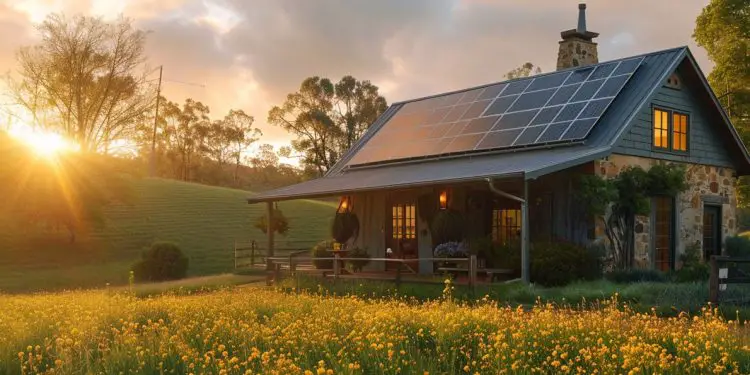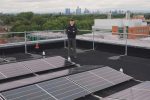Solar Showdown: A Comparison of 5 Residential Energy Systems

In today’s world, the need for sustainable and renewable energy sources has never been more critical. As concerns about climate change and environmental sustainability continue to grow, homeowners are increasingly turning to residential energy systems as a way to reduce their carbon footprint and save money on utility bills. So if you, for example, looking to explore solar options for your Fort Wayne property, then read on…
Solar Power Systems
Solar power systems harness the energy of the sun to generate electricity for residential use. They typically consist of solar panels, inverters, and a mounting system.
Types of Solar Panels
There are two main types of solar panels: photovoltaic (PV) panels and solar thermal panels. PV panels convert sunlight directly into electricity, while solar thermal panels use sunlight to heat water or air.
Pros and Cons
Solar power systems offer numerous benefits, including reduced electricity bills, low maintenance requirements, and a long lifespan. However, they can be expensive to install upfront and may not be suitable for every home due to factors such as shading or roof orientation.
Wind Power Systems
Overview
Wind power systems utilize the kinetic energy of the wind to generate electricity. They consist of a wind turbine, tower, and controller.
Types of Wind Turbines
There are two main types of wind turbines: horizontal-axis turbines and vertical-axis turbines. Horizontal-axis turbines are the most common and typically have three blades that rotate around a horizontal axis.
Pros and Cons
Wind power systems are highly efficient in the right conditions and can generate significant amounts of electricity. However, they can be noisy and visually obtrusive, and their effectiveness depends on the availability of consistent wind.
Hydroelectric Power Systems
Overview
Hydroelectric power systems generate electricity by harnessing the energy of flowing water. They can range in size from small-scale micro-hydro systems to large dams.
Types of Hydroelectric Systems
Hydroelectric systems can be classified as either impoundment or diversion systems, depending on how they control the flow of water. Impoundment systems, such as dams, store water in a reservoir and release it through turbines to generate electricity. Diversion systems, on the other hand, channel water from a natural water source, such as a river or stream, through turbines.
Pros and Cons
Hydroelectric power systems are a clean and renewable energy source that produces minimal greenhouse gas emissions. However, they can have significant environmental impacts, including habitat disruption and fish migration barriers.
Geothermal Power Systems
Overview
Geothermal power systems harness the heat energy stored beneath the Earth’s surface to generate electricity. They typically consist of a geothermal heat pump and a distribution system.
Types of Geothermal Systems
Geothermal systems can be classified as either ground source heat pumps or direct-use geothermal systems. Ground source heat pumps use the stable temperature of the ground to heat and cool buildings, while direct-use geothermal systems extract hot water or steam from underground reservoirs.
Pros and Cons
Geothermal power systems are highly efficient and can provide consistent energy output year-round. However, they can be expensive to install, and their effectiveness depends on the availability of suitable geological conditions.
Biomass Power Systems
Overview
Biomass power systems generate electricity by burning organic materials, such as wood, agricultural residues, or waste.
Types of Biomass Systems
Biomass systems can be classified as either combustion or gasification systems, depending on how they convert biomass into energy. Combustion systems burn biomass directly to produce heat, which is then used to generate electricity. Gasification systems convert biomass into a combustible gas, which is then burned to generate electricity.
Pros and Cons
Biomass power systems can provide a reliable source of renewable energy and help reduce waste by utilizing organic materials that would otherwise be discarded. However, they can emit pollutants such as carbon monoxide and particulate matter and may compete with food production for biomass feedstocks.
Cost Comparison
When analyzing the expenses associated with various residential energy systems, it’s crucial to factor in both the initial investment and the potential long-term savings. Although solar and wind power setups might come with higher upfront costs, they often translate into substantial reductions in electricity bills down the line. Conversely, biomass and hydroelectric systems might entail lower initial expenditures, but they could entail greater maintenance needs and operational expenses over time. For a comprehensive understanding of the financial implications and benefits of each option, consider consulting resources like energyhelpline.com. Their expertise can assist you in making an informed decision tailored to your financial goals and energy needs.
Environmental Impact
Residential energy systems play a crucial role in reducing greenhouse gas emissions and mitigating climate change. Solar, wind, and geothermal power systems are particularly environmentally friendly, as they produce minimal or zero greenhouse gas emissions during operation. In contrast, biomass and hydroelectric systems can have significant environmental impacts, such as deforestation, habitat destruction, and water pollution.
Efficiency Comparison
When evaluating the efficiency of residential energy systems, it’s essential to consider factors such as energy output and dependability. Solar and wind power systems are highly efficient in the right conditions and can provide consistent energy output year-round. Geothermal systems are also highly efficient but may be limited by geological factors such as location and depth. In contrast, biomass and hydroelectric systems can be less efficient and may depend on external factors such as fuel availability and water flow.
Suitability for Different Regions
The suitability of residential energy systems varies depending on factors such as climate, geography, and local regulations. Solar power systems are well-suited to regions with abundant sunlight, while wind power systems are more effective in areas with consistent wind patterns. Hydroelectric systems require access to flowing water sources, making them ideal for regions with rivers or streams. Geothermal systems can be installed almost anywhere but may be more cost-effective in areas with suitable geological conditions. Biomass systems are versatile but may be limited by factors such as fuel availability and air quality regulations.
Government Incentives
Many governments offer incentives and subsidies to encourage the adoption of renewable energy systems. These incentives can include tax credits, rebates, and grants for the installation of solar panels, wind turbines, geothermal heat pumps, and biomass boilers. By taking advantage of these incentives, homeowners can offset the upfront costs of residential energy systems and accelerate the transition to clean and sustainable energy sources.
Future Trends
As technology continues to advance, the residential energy sector is likely to see significant innovation and growth in the coming years. Emerging technologies such as advanced battery storage, smart grids, and energy-efficient appliances are making renewable energy systems more accessible and affordable than ever before. Predictions for the future of residential energy systems include increased integration with smart home technologies, improved energy storage capabilities, and greater decentralization of the energy grid.
Residential energy systems offer a sustainable and cost-effective alternative to traditional fossil fuel-based electricity. By harnessing the power of the sun, wind, water, earth, and biomass, homeowners can reduce their carbon footprint, save money on utility bills, and contribute to a cleaner and healthier planet. When choosing a residential energy system, it’s essential to consider factors such as cost, environmental impact, efficiency, suitability for different regions, and available government incentives. By carefully evaluating these factors and consulting with renewable energy experts, homeowners can make informed decisions that benefit both their wallets and the environment.










